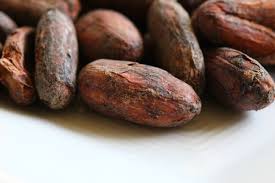
They couldn’t see the chocolate for the beans – how insight transformed Green & Black’s
Sometimes you can get too close to something, where you can’t see the wood from the trees, or in this case the chocolate for the beans. The insight that helped transform Green & Black’s into a real contender came not from the original founders but from a later investor and their own customers.
Craig Sams had been a hippy, and later supplied the food for the first Glastonbury festival, before deciding to start the pioneering organic food company – Whole Earth. In 1991, a budding supplier sent him an unsolicited sample of organic cocoa beans
.

Curiosity peaked, Craig made up a small bar of 70% dark chocolate. He tried a bit and left the rest of the bar on his desk. A little while later his wife Josephine walked past the desk saw the chocolate and decided to try some.
She loved it. She had never tasted anything quite like it.
 The couple decided they had another potential hit on the hands.
The couple decided they had another potential hit on the hands.
Looking for a name, they thought back to their childhood and some of the famous confectionary brands of the time. Brands like Callard & Bowser and Barker & Dobson. They came up with Green & Black’s, two names that reflected the organic origins and the intensity of the dark chocolate. 
A few months later Craig & Jo took a holiday to Belize. It was there that they learnt about the plight of a group of Mayan farmers who had planted cocoa trees on the understanding that their crop would be bought by a large chocolate company. The chocolate company had however pulled out of Belize leaving the farmer without a buyer for their beans. Craig and Jo decided to help out, and agreed not only to buy the crop but also to pay a full and fair price for it.
 They used the crop to create a product based on a traditional Mayan chocolate and spice drink using orange, cinnamon and hint of vanilla. Mayan Gold was to become a star product and it became the first-ever chocolate bar to be awarded the Fairtrade Mark by the Fairtrade Foundation UK.
They used the crop to create a product based on a traditional Mayan chocolate and spice drink using orange, cinnamon and hint of vanilla. Mayan Gold was to become a star product and it became the first-ever chocolate bar to be awarded the Fairtrade Mark by the Fairtrade Foundation UK.
Despite so much going to for it, the business failed to accelerate away and by 1998, it was struggling and was heading into financial difficulties.
It was at this point that William Kendall and his business partner Nick Beart stepped in. Kendall had been a farmer but had turned entrepreneur when he help turn around the New Covent Garden Soup Company. He had helped sell the company for £20 million in 1997 and decided to invest in Green & Black’s.
“We persuaded them that we could work with them, leaving the founders with a minority stake. [We] took an 80% share, but encouraged them to believe they could have a role going forward as spokespeople,” recalls Kendall “I was intrigued by the business model and products, and could see that Craig needed help turning his visionary ideas into a profitable business.” 
What Kendall and the new team they had put in could see was that the marketing wasn’t working. Whilst organic was becoming trendier, organic chocolate was something different. “They [customers] thought organic chocolate wouldn’t be as good,” said Kendall “It’s [chocolate’s] a sin after all, and who wants organic sin?”
“Both organic chocolate and dark chocolate had an image of being poor in taste and somehow foreign, so we repositioned the product as a luxury chocolate with a traditional British image first and foremost, and an organic product second.”
With the new insight driving a new refocused marketing approach, bars flew off shelves.